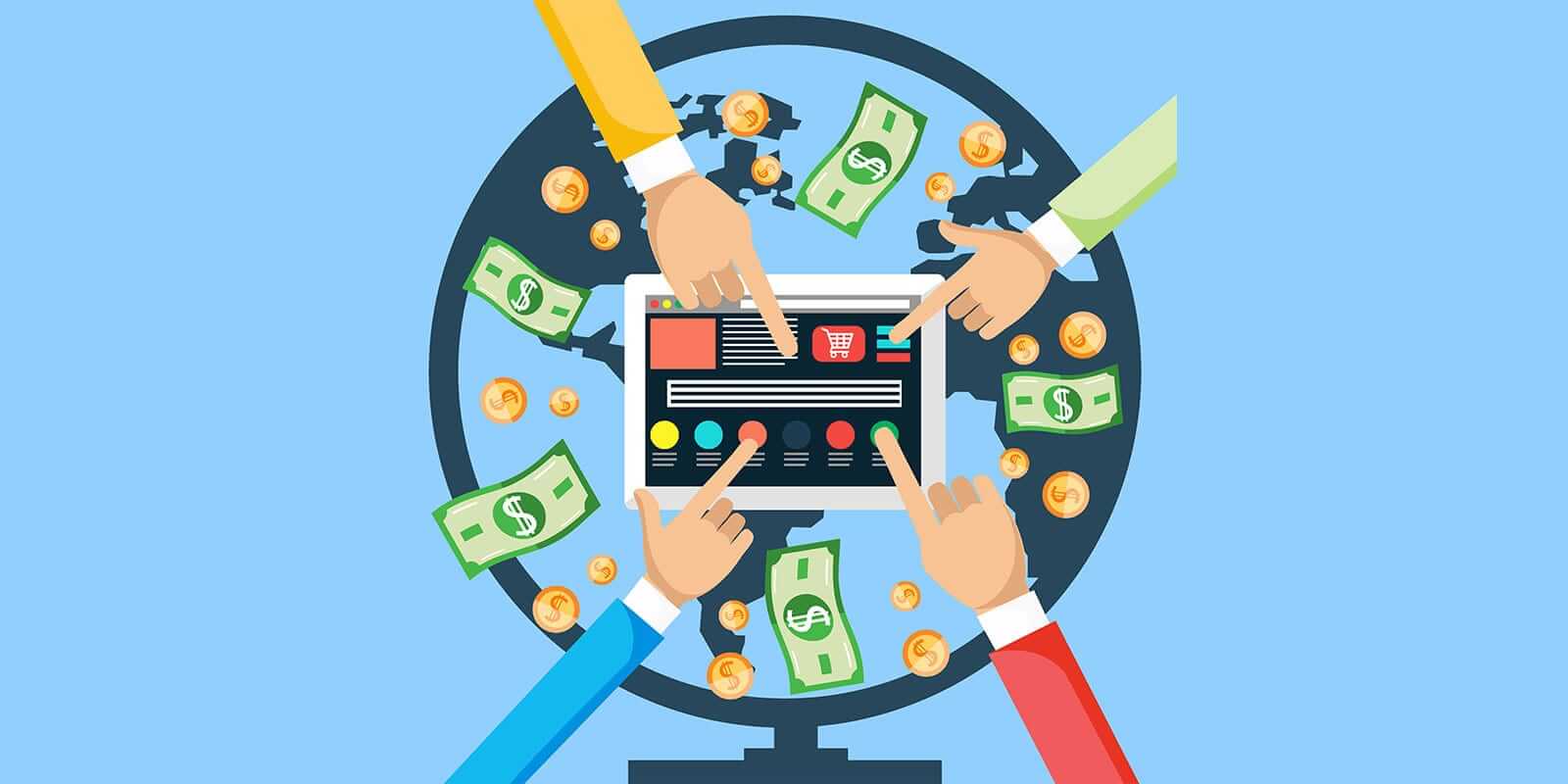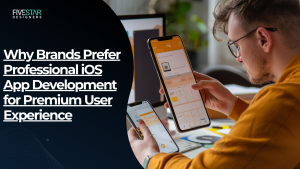Do you want to create a free app but are unsure how to monetize it? You’re not alone. Making money from free apps can be challenging, but it’s not impossible. In this blog post, we’ll explore the best strategies for how free apps make money in 2023.
Read more about: Mobile App Development Company in UK
Best Strategies to Make Money with Free Apps
There are multiple ways to monetize a free app, including in-app purchases, advertising, subscriptions, user surveys and market research, blockchain and cryptocurrency, localized and native advertising, user-generated content, donations and crowdsourcing, and more.
In-App Advertising
In-app advertising is one of the most popular ways to make money from free apps. Developers earn money by displaying ads to users while they use the app. The revenue generated from these ads is shared between the developer and the ad network. Ad networks like Google AdMob and Facebook Audience Network are popular choices for developers.
According to Statista, mobile ad spending in the United States is expected to reach $196 billion by 2023. This shows that in-app advertising is a lucrative market for developers to tap into.
In-App Purchases
In-app purchases are another popular monetization strategy for free apps. Developers can offer users the option to purchase virtual goods or premium features within the app. Freemium apps, free to download but offering premium features for a fee, are a popular example of this strategy.
According to App Annie, in 2020, in-app purchases generated $72.3 billion in revenue globally. This shows that users are willing to pay for virtual goods and premium features within free apps.
Subscription Model
The subscription model is another monetization strategy for free apps. Developers can offer users the option to subscribe to the app for a monthly or yearly fee. This model is popular for apps offering users ongoing value, such as music streaming or fitness apps.
In 2020, app subscriptions generated $13 billion in revenue globally, according to Sensor Tower. This shows users are willing to pay for ongoing value within free apps.
Sponsorship
Sponsorship is a lesser-known monetization strategy for free apps, but it can be lucrative for developers. Developers can partner with brands to offer sponsored content within the app. For example, a fitness app could partner with a sports drink brand to give users a discount on their product.
According to Mobile Marketer, mobile sponsorships were expected to reach $3.56 billion by 2022. This shows that sponsorship is a growing market for developers to explore.
Crowdfunding
Crowdfunding is a newer monetization strategy for free apps. Developers can use crowdfunding platforms like Kickstarter to raise funds to develop and maintain the app. In return, backers receive exclusive access to the app or other perks.
According to Statista, the crowdfunding market was expected to reach $8.5 billion by 2022. This shows that crowdfunding is a growing market for developers to explore.
Freemium Model
Freemium is a popular model where the app is free to download, but users must pay for additional features. The basic version of the app is free, but the developer can charge for additional features or functionality. This model is popular for games and productivity apps.
According to Sensor Tower, the revenue generated by freemium apps increased by 31% in 2020, reaching $97.2 billion globally. This shows that the freemium model is a lucrative way for developers to monetize their apps.
Affiliate Marketing
Affiliate marketing is a model where the app promotes a product or service, and the developer gets a commission for every sale that results from the promotion. The app can promote the product or service through ads or other means, and the commission can vary depending on the product or service being promoted.
According to Statista, the affiliate marketing market is expected to reach $8.2 billion by 2022. This shows that affiliate marketing is a growing market for developers to explore.
Selling User Data
Selling user data is a controversial monetization strategy, but some developers use it to generate revenue. The app collects user data in this model and sells it to third-party companies for marketing purposes.
According to Business Insider, the global market for selling user data is expected to reach $330 billion by 2025. This shows that selling user data can be a profitable monetization strategy for some apps, but developers must be careful to protect user privacy and comply with regulations.
Licensing the App
Licensing the app is a model where the developer charges other companies for the right to use it. This model is popular for enterprise apps, where companies need to use the app for internal purposes.
According to MarketsandMarkets, the global mobile enterprise application development platform market is expected to reach $14.2 billion by 2022. This shows that the licensing model can be a lucrative way for developers to monetize their apps.
White Labeling the App
White labeling is a model where the developer creates a generic app that other companies can rebrand and resell. This model is popular for companies that want to offer an app but don’t have the resources to develop one from scratch.
According to MarketsandMarkets, the global market for white-label apps is expected to reach $15.3 billion by 2025. This shows that the white-labeling model is a growing market for developers to explore.
Targeted Advertising
Targeted advertising is a way for developers to generate revenue by showing relevant ads to users. In this model, the app collects user data, such as demographics and browsing history, to show personalized ads.
According to eMarketer, the global digital ad spend is expected to reach $389 billion in 2021. This shows that targeted advertising can be a lucrative way for developers to monetize their apps.
Virtual Goods and Currency
Virtual goods and currency are a way for developers to generate revenue by selling virtual items within the app. Users can purchase virtual currency, such as coins or gems, to access premium features or buy virtual items.
According to Business of Apps, the global mobile gaming market is expected to generate $120 billion in revenue in 2021. This shows that virtual goods and currency can be significant sources of revenue for gaming apps.
Referral Marketing
Referral marketing is a way for developers to generate revenue by incentivizing users who refer others to the app. In this model, users receive rewards, such as virtual currency or premium features, for referring others to download the app.
According to ReferralCandy, referral marketing can increase customer acquisition by up to 25%. This shows that referral marketing can be an effective way for developers to increase user acquisition and generate revenue.
Premium Features and Upgrades
Premium features and upgrades are a way for developers to offer additional content or features to users for a one-time fee. This model is popular for productivity apps, photo editing apps, and other apps that offer specialized tools or features.
According to Business of Apps, the global mobile app revenue from premium apps and app purchases is expected to reach $76 billion in 2021. This shows that premium features and upgrades can be a significant source of revenue for developers.
Donations
Donations are a way for developers to generate revenue by accepting donations from users who appreciate the app. This model is popular for non-profit apps, open-source apps, and apps that offer a unique value proposition.
According to Statista, the global donation-based crowdfunding market is expected to reach $8.7 billion by 2026. This shows that donations can be a potentially effective way for developers to generate revenue and support their app development efforts.
Other Monetizing Strategies
In addition to the strategies mentioned above, there are other ways to make money with free apps, some of which are mentioned below:
Multiple Monetization Strategies
Using multiple monetization strategies can be a way for developers to maximize their revenue from a single app. For example, an app may offer in-app purchases, subscriptions, and advertising to generate revenue from multiple sources.
According to a report by App Annie, apps that use multiple monetization strategies generate 70% more revenue than apps with a single monetization model. This shows that combining multiple strategies can be an effective way for developers to monetize their free apps.
User Surveys and Market Research
User surveys and market research can be a way for developers to generate revenue by selling user data to research firms or advertisers. This model is controversial, but it can be a way for developers to generate revenue without impacting the user experience.
According to a report by AppsFlyer, market research revenue from apps is expected to reach $2.1 billion by 2022. This shows that user surveys and market research can potentially be lucrative monetization strategies for developers.
Offering Paid Services
Offering paid services within the app can be a way for developers to generate revenue from users who need additional support or customization. For example, a language learning app may offer one-on-one tutoring services for a fee.
According to Business of Apps, the global market for mobile app services is expected to reach $238 billion by 2022. This shows that offering paid services can be a growing market for developers to explore.
Using Blockchain and Cryptocurrency
Using blockchain and cryptocurrency can be a way for developers to generate revenue by creating a decentralized app that uses its own cryptocurrency or rewards users with cryptocurrency for using the app.
According to a report by MarketsandMarkets, the global blockchain market is expected to reach $39.7 billion by 2025. This shows that using blockchain and cryptocurrency can potentially be lucrative monetization strategies for developers.
Localized Advertising
Localized advertising allows developers to generate revenue by showing ads relevant to a user’s location. For example, a restaurant app may show ads for nearby restaurants or food delivery services.
According to a report by eMarketer, the global location-based advertising market is expected to reach $30.3 billion by 2025. This shows that localized advertising can be a potentially effective way for developers to generate revenue from their free apps.
Native Advertising
Native advertising allows developers to generate revenue by showing ads seamlessly integrated into the app’s user interface. This model can be less disruptive than traditional banner ads but requires careful design and placement to be effective.
According to Business of Apps, the global native advertising market is expected to reach $52.8 billion by 2025. This shows that native advertising can be a growing market for developers to explore.
User-Generated Content Monetization
User-generated content monetization allows developers to generate revenue by allowing users to create and share content within the app. For example, a social media app may allow users to sell their artwork or photography to other users.
According to a report by eMarketer, the global user-generated content market is expected to reach $31.7 billion by 2025. This shows that user-generated content monetization can be a potentially effective way for developers to generate revenue.
Gamification and Incentivization
Gamification and incentivization are ways for developers to keep users engaged and encourage them to spend money on the app. For example, a fitness app may reward users who meet their daily fitness goals.
According to a report by Business Insider, the global gamification market is expected to reach $11.1 billion by 2025. This shows that gamification and incentivization can be potentially effective ways for developers to generate revenue and keep users engaged.
Social Media Integration for Advertising
Social media integration can be a way for developers to leverage the power of social media to generate revenue through advertising. For example, an app may allow users to share content on social media and earn rewards or discounts.
According to a report by eMarketer, global social media ad spending is expected to reach $147 billion by 2023. This shows that social media integration can be a potentially effective way for developers to generate revenue and reach a wider audience.
Frequently Asked Questions (FAQs)
Are in-app purchases still popular for free apps to generate revenue in 2023?
Can free apps make money through advertising?
Are subscriptions a viable way for free apps to generate revenue?
Is it possible for free apps to make money through user surveys and market research?
Can free apps make money through donations and crowdsourcing?
Is blockchain and cryptocurrency a viable monetization strategy for free apps?
Should developers use multiple monetization strategies for their free apps?
Final Thoughts
There are many ways to make money from free apps in 2023. In-app advertising, purchases, subscriptions, sponsorship, and crowdfunding are all viable monetization strategies. When choosing a monetization strategy, developers should consider their target audience, app category, and revenue goals. With the right strategy, free apps can be profitable and successful in the app market.




